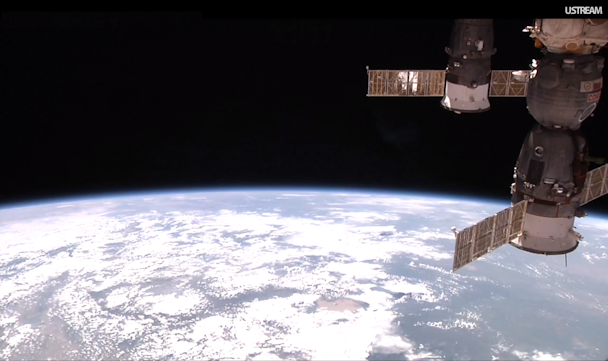How NASA is working with IBM Cloud Video's Ustream to help viewers get their space fix
One of the greatest moments in TV history was the broadcast of Apollo 11 landing on the moon in 1969. A lot had changed since then, including how people consume content of both historic and everyday events.

iss_hd_earth_viewing_experiment2.png
If anything, space exploration and scientific discovery should inspire more people today than ever before. That is partly because of how much content – live content in particular – is available at viewers’ fingertips.
NASA began livestreaming missions in 2004, before people watched much live video on the web. In 2009, NASA partnered with Ustream (acquired by IBM in 2016) to help with its efforts, and since then, “NASA has created more than 60 Ustream channels since it began live-streaming, and 18 of those are currently active today,” Alden Fertig, VP of product at Ustream, an IBM Company, told Found Remote. “Last year, NASA's top three Ustream channels attracted more than 55 million views. The streams enable space enthusiasts around the world to engage with NASA’s program from the convenience of their computers, smartphones or preferred devices. Instead of just watching major events broadcast over TV, people around the world can get more detail and content about NASA and its missions.”
‘NASA TV” now airs a mix of prerecorded and live programming 24 hours a day, and its broadcast of asteroid DA-14’s near-Earth fly-by in February 2013 drew a peak audience of 1.4 million concurrent live-stream viewers.
Earlier today, Peggy Whitson (who becomes the oldest woman in space), along with colleagues from Russia and Europe, began a journey to the International Space Station (ISS) to carry the new Expedition 50-51 trio to its new home in space. NASA turned to IBM Cloud Video’s Ustream to stream the monumental event.
“For an event that is literally out of this world, NASA needs a reliable provider that can stream video on a massive scale and quickly adjust to changing viewership levels,” said Fertig. “Viewer levels for NASA Ustream channels can go from a few people to millions of people depending on the event. This technology will be used today for a live-stream of the Expedition 50-51 launch that will enable viewers across the globe to tune in from any device.”

